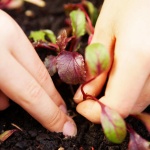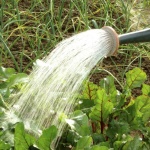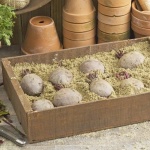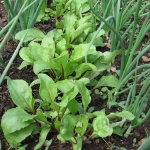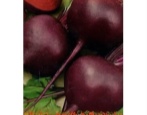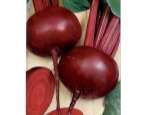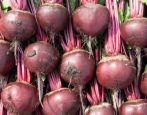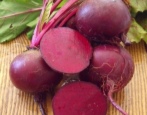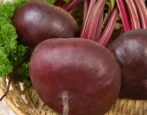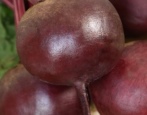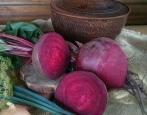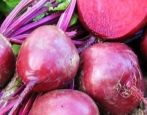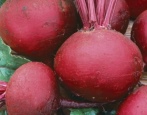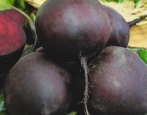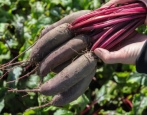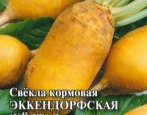
- Authors: Horal Jiri, Klapste Petr, Alekseev Yuri Borisovich
- Year of approval: 1999
- Leaves: large, green-red, oval, slightly wrinkled, slightly wavy edges
- The form: cylindrical
- Weight, g: 200-330
- Cork head: weak
- Pulp color : Dark red
- Ringiness: mild
- Taste qualities: good and excellent
- Appointment: for canning
All varieties of beetroot can be conditionally divided into two main groups: cylindrical and spherical. Mona's beet belongs to those specimens that have the shape of a cylinder, which makes it different from many. But the variety is famous not only for this.
Breeding history
Mona beetroot is the result of domestic selection, which was born at the turn of the century. The authors of the culture were Horal Jiri, Klapste Petr, Alekseev Yuri Borisovich. The originator of the variety is the Semko-Junior company. In 1999, the crop was included in the State Register for the Russian Federation and recommended for cultivation in garden plots, as well as in small farms.
Description of the variety
The main positive characteristic of Mona beets is that it is a single-sprout variety. This means that one shoot will grow from one seed, and not 3 or 5, therefore, thinning is not required. The result will be a quick formation of root crops, while they turn out to be even, and the yield is stable. Due to their elongated shape, the beets are submerged in the ground by a third, so it is quite easy to pull them out when harvesting.
Characteristics of the appearance of the plant and root crops
The leaves of the Mona variety are large, oval in shape, painted in a contrasting green with a red color, they are also slightly wrinkled, with slight waviness at the edges.
The root crop itself has an interesting cylindrical shape, its average weight is 200-330 grams. Red beets with dark red pulp.
Purpose and taste of tubers
Gardeners note the good and excellent taste of the Mona variety. It is recommended to be preserved, stored, and also grown for bunch products. The flesh of the root vegetable is tender and juicy, the rings are weakly expressed.
Maturation
Mona is a medium early beet. The time interval that passes between germination and harvesting includes 105 days.
Yield
High yields on average reach 550-580 c / ha.
Growing regions
According to the state register, Mona beets are recommended for cultivation almost throughout the entire territory of the Russian Federation. These are such regions as the North, North-West, Central Black Earth and Central, Volgo-Vyatka and North Caucasian, Middle and Lower Volga, Ural, West and East Siberian, as well as the Far East.
Growing and care
For sowing a crop, it is necessary to choose a sunny place on the site. In terms of sowing in the ground, this will be the interval from 10 to 20 May. In this case, the warming up of the earth should be up to a temperature of +7 degrees. When disembarking, it is recommended to adhere to the 30x10 centimeters scheme.
As already mentioned, the culture does not require thinning. It is worth deepening crops by no more than 40 millimeters. Until the first shoots appear, it is possible to use a covering material, which will help retain moisture in the soil and accelerate germination.
In areas where the climate is cooler, the seedling method is used.A feature of care is the absence of the need for stepwise thinning. Weeding should be carried out as the seedlings overgrow with weeds. Such work is carried out between the rows, as well as in the grooves with growing root crops.
After the formation of 4-5 leaves, top dressing is introduced into the ground (manure or ash, as well as a solution of ammonium sulfate). And it can also be a mixture of highly diluted poultry manure and boric acid, in addition, calcium nitrate can be used.
Mona's beetroot variety, like other crops, will need timely irrigation. The main thing is not to forget about the danger of excess moisture. Reduce the amount of liquid a couple of weeks before harvesting.

Beetroot tolerates cold snaps, therefore it is widely grown in the open field. When planting beets, you need to correctly determine the sowing time, choose a suitable place, prepare the beds, and do pre-sowing seed treatment.
